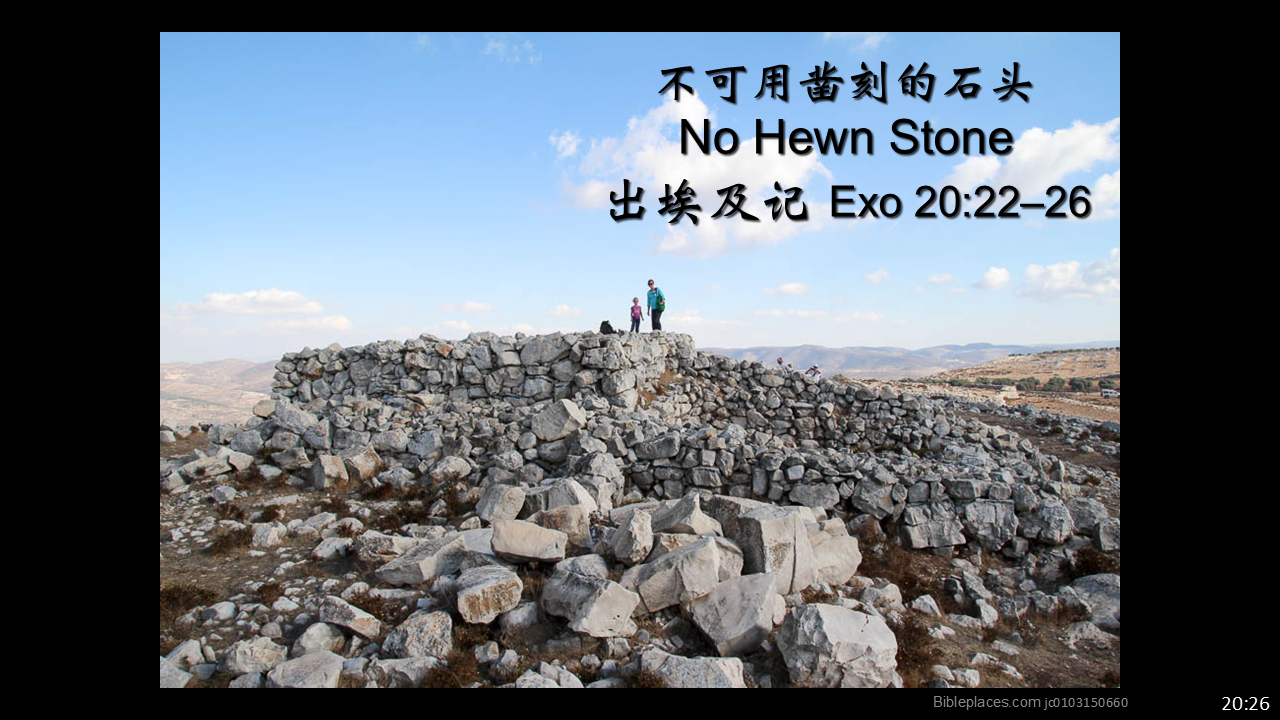不可用凿刻的石头 No Hewn Stone
出埃及记 Exo 20:22–26
Remember these points
I put these points at the top of my sermon-prep template to remind myself every week:
- Show that main point of passage relates to Jesus and his saving work
- (1 Cor 1:18) A truly gospel-centred message will not be acceptable in a synagogue or mosque
- Did I proclaim the gospel as the headline news of the sermon, rather than as a “by the way…”?
- Unbelievers are called to repent, believe, and be saved
- Believers are encouraged to abandon their old self, renew their minds, put on the new self in Christ
- Preach simple sermons, so that God’s people can see Christ more clearly and love him more dearly
Review
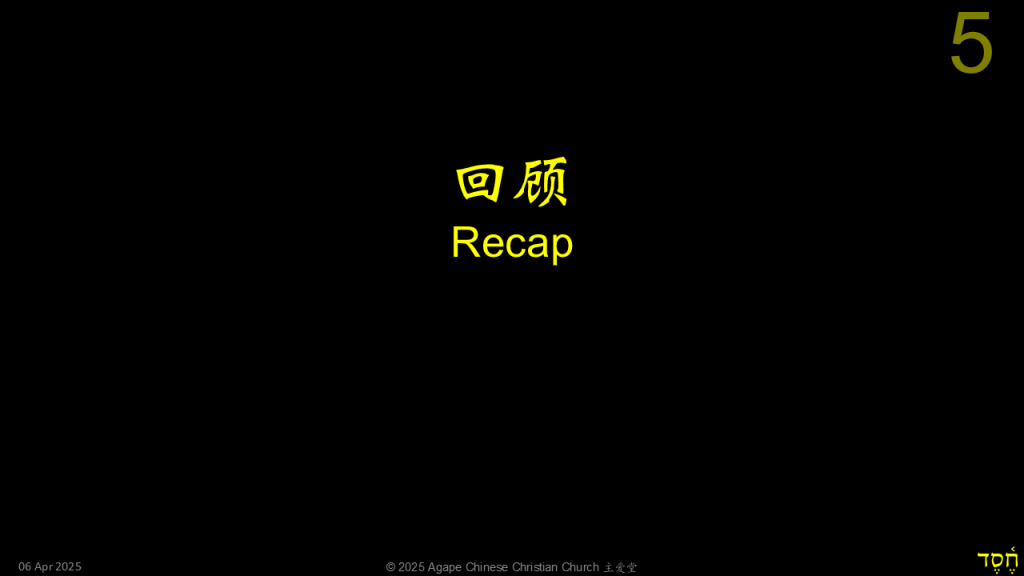
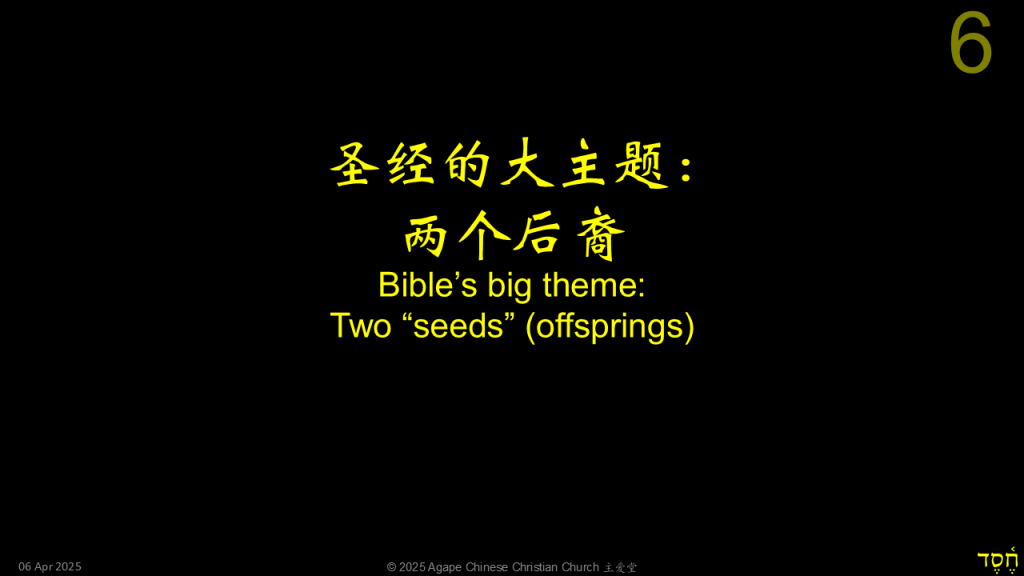
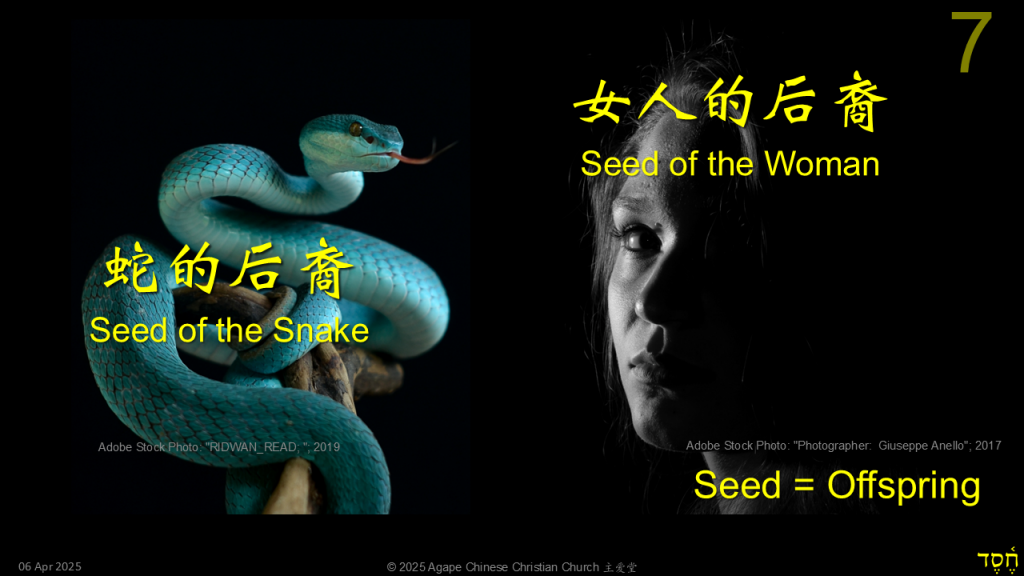
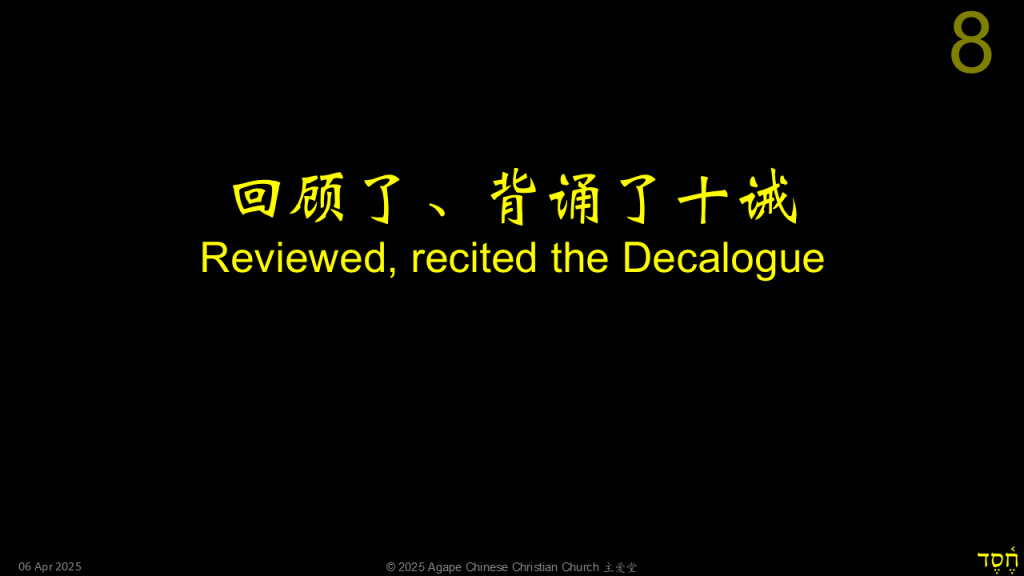
Hook
Look at a few altars
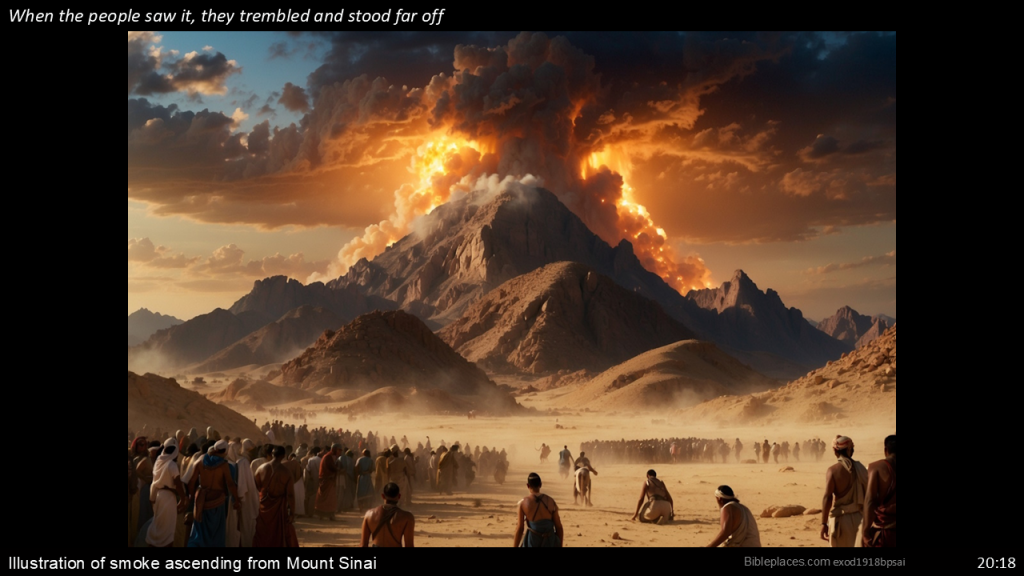
- BiblePlaces.com Exod1918bpsai The picture is AI generated.
- Exo 19:17 They were at the foot of the mountain 他们都站在山脚下
- Exo 19:17b CCB Exo 20:18 They were standing far off. 百姓看见此情景,都吓得浑身颤抖,不敢挨近 Exo 20:18b CCB
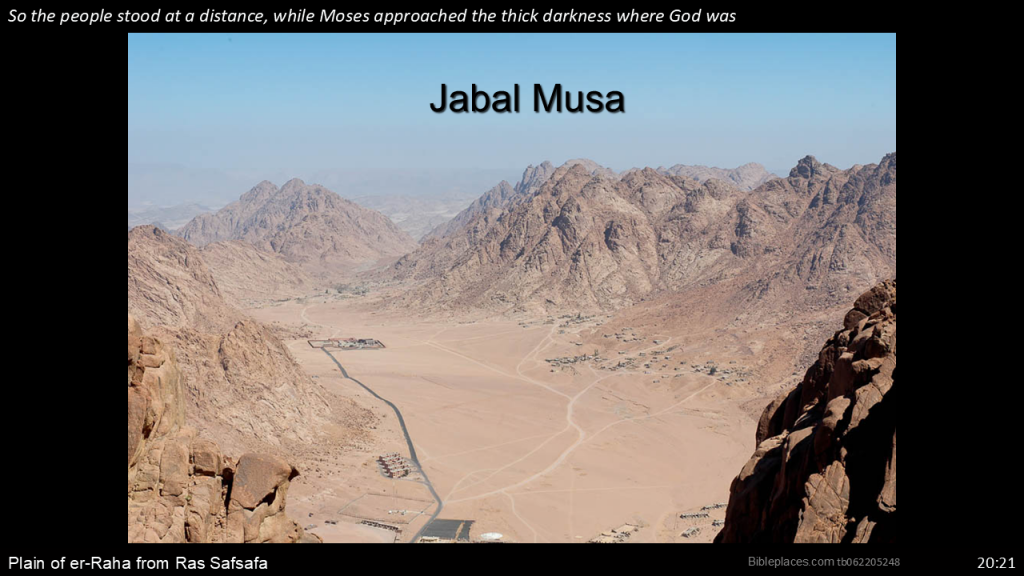
- BiblePlaces.com Tb062205248
- This is a real picture of Jabal Musa (Arabic for Mountain of Moses جبل موسى)
- It’s in current day Sinai Peninsula (today is part of modern Egypt, but not back in the days of the Exodus)
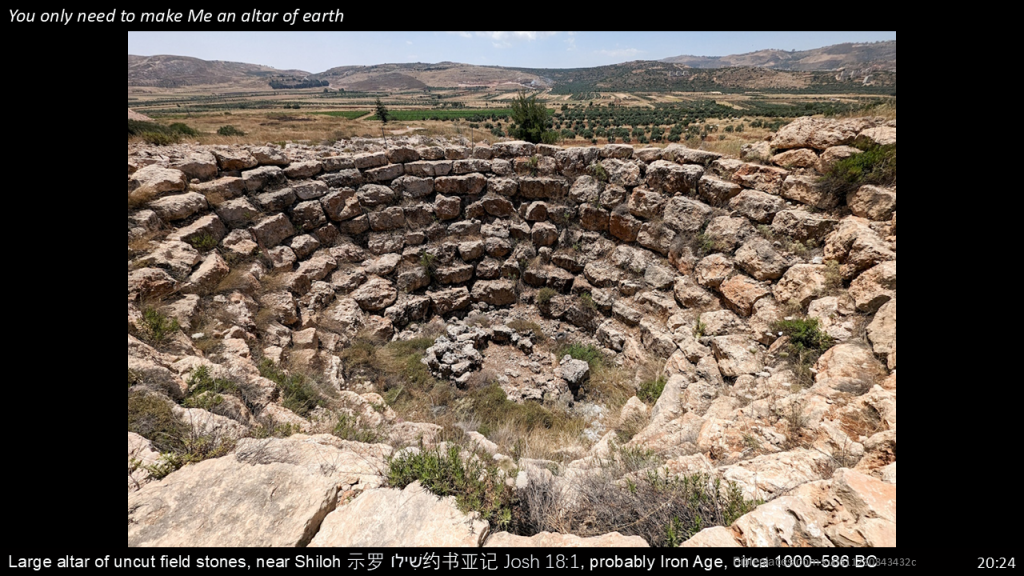
- BiblePlaces.com ku0611230843432c
- The reference here to an altar of “earth” (Heb. adamah, אֲדָמָה) is probably intended to indicate natural substances (soil, field stones), as opposed to manufactured items such as metal or even cut stone (cf. Exod 20:25; Deut 27:5). The altar in this photo is located about a mile (1.6 km) southeast of Shiloh. It has been surrounded by a silo of large stone blocks in modern times to protect it (the ground around it has been significantly back-filled due to its location near an industrial zone), but the very large original altar of uncut field stones is preserved at the center. The altar itself is approximately 20 feet (6 m) by 15 feet (4.6 m).
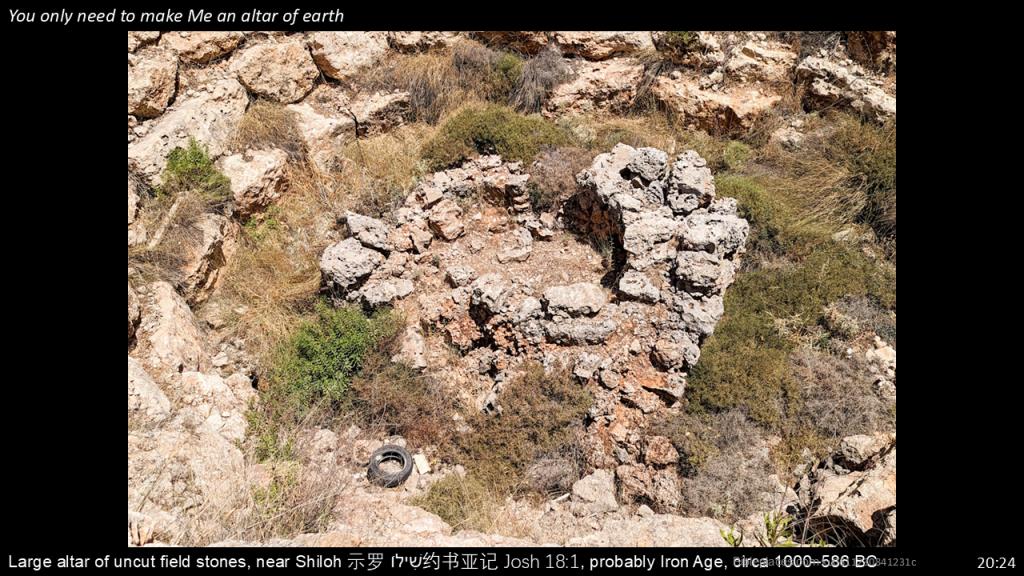
BiblePlaces.com ku0611230841231
The date of this altar is unknown, but given the environment and the period in which such altars were built, a date in the Iron Age II seems reasonable. For size perspective, note the automotive tire lying next to the altar.
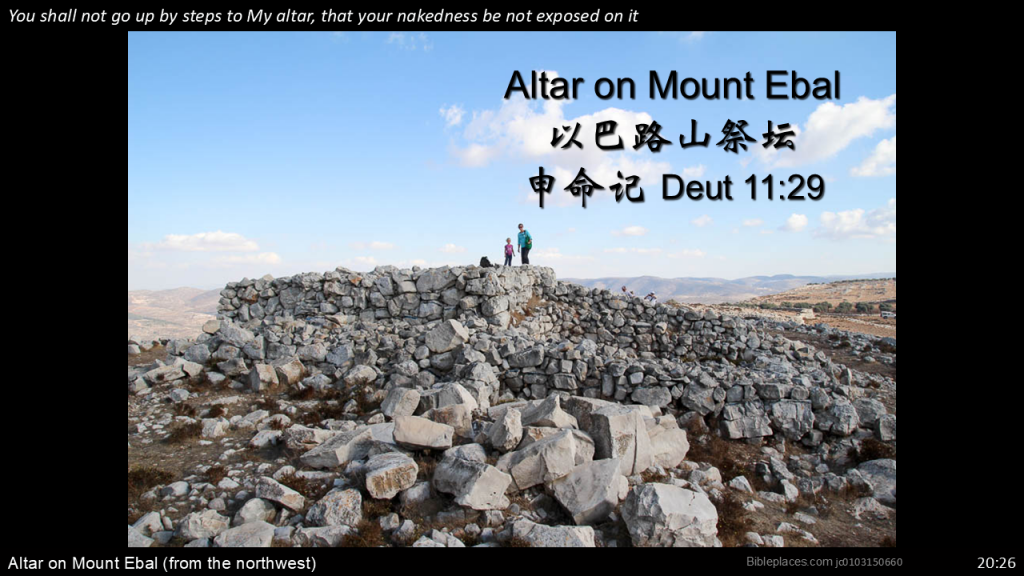
BiblePlaces.com ws092213002
This structure on Mount Ebal is thought by some scholars to be a sacrificial altar and/or cultic site related to the settlement period of Israel. Some even consider it to be the altar mentioned in Joshua 8:30. The upper portion of this structure has been reconstructed, based on the foundations that were discovered. This included a ramp that provided access to the top of the altar. The ramp is visible to the right of the people standing on the altar.
NET sn: Mount Gerizim … Mount Ebal. These two mountains are near the ancient site of Shechem and the modern city of Nablus. The valley between them is like a great amphitheater with the mountain slopes as seating sections. The place was sacred because it was there that Abraham pitched his camp and built his first altar after coming to Canaan (Gen 12:6). Jacob also settled at Shechem for a time and dug a well from which Jesus once requested a drink of water (Gen 33:18–20; John 4:5–7). When Joshua and the Israelites finally brought Canaan under control they assembled at Shechem as Moses commanded and undertook a ritual of covenant reaffirmation (Josh 8:30–35; 24:1, 25). Half the tribes stood on Mt. Gerizim and half on Mt. Ebal and in antiphonal chorus pledged their loyalty to the Lord before Joshua and the Levites who stood in the valley below (Josh 8:33; cf. Deut 27:11–13). Biblical Studies Press. 2019. . Second Edition. Denmark: Thomas Nelson.
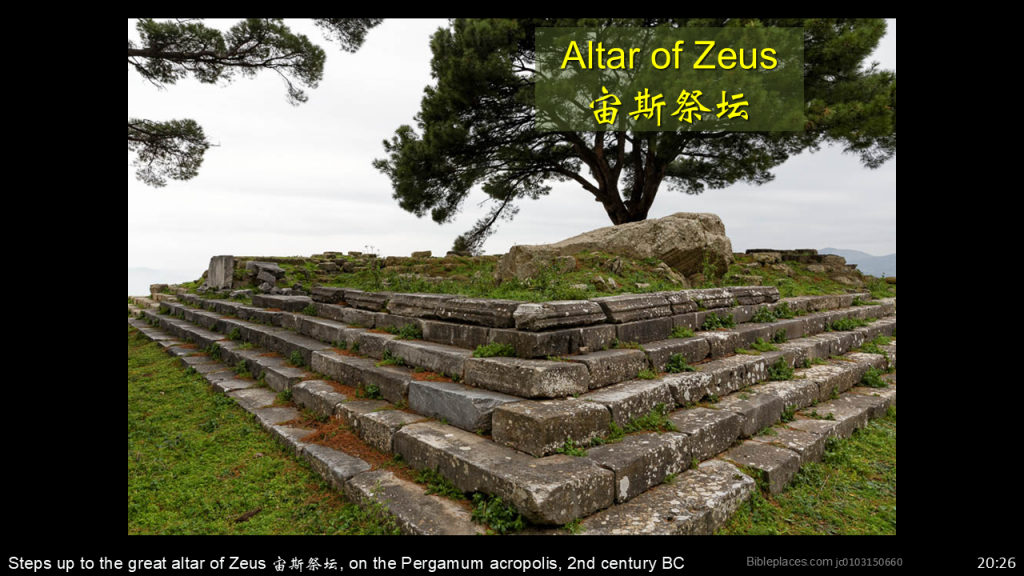
BiblePlaces.com jc0103150660
The great altar of Zeus was unusually large, with a stepped platform all the way around the altar.
Zeus 宙斯 Zhòusī (Greek), Jupiter 朱庇特 Zhū bì tè (Roman)
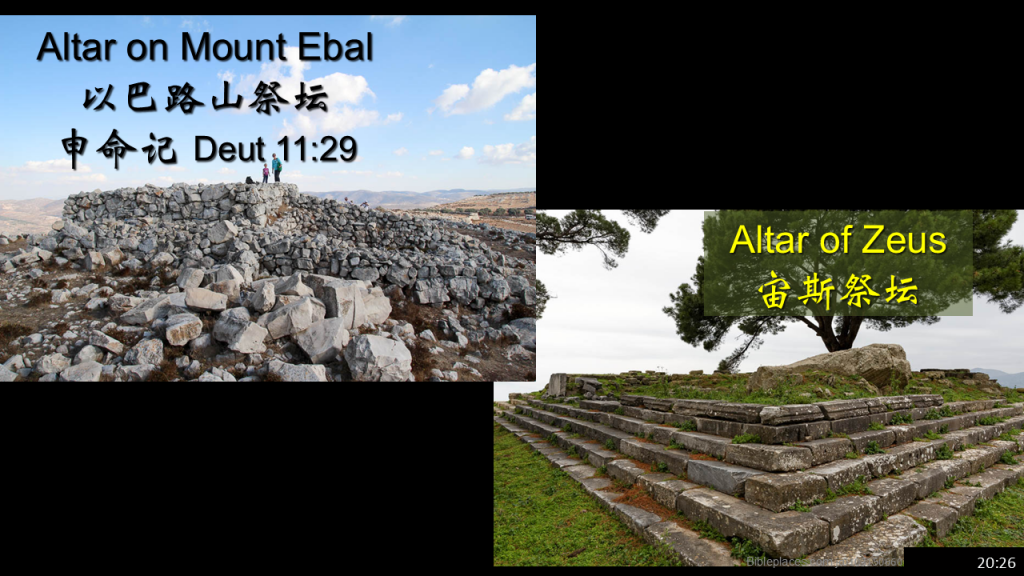
Compare the 2 altars. What are the differences?
Passage
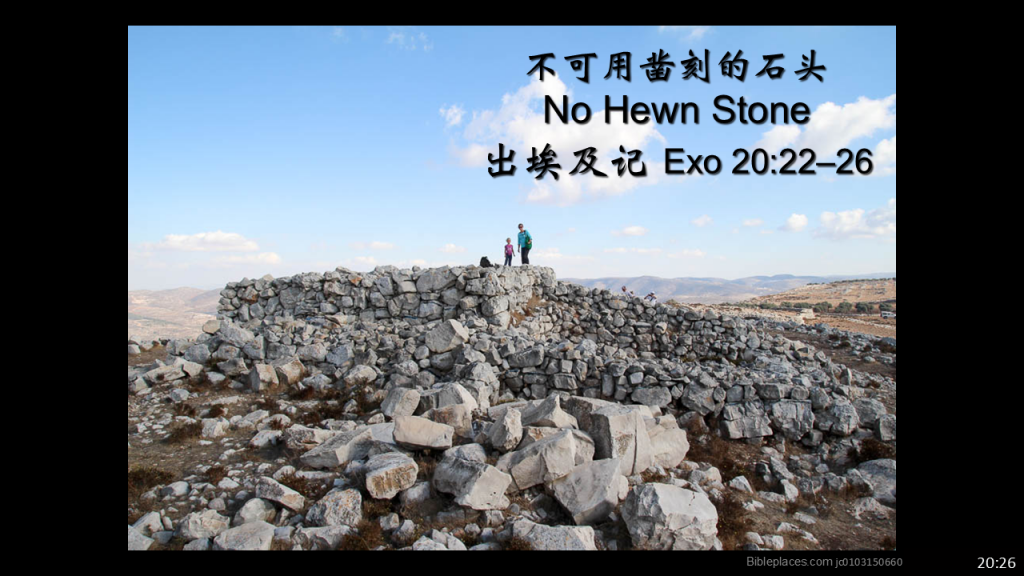
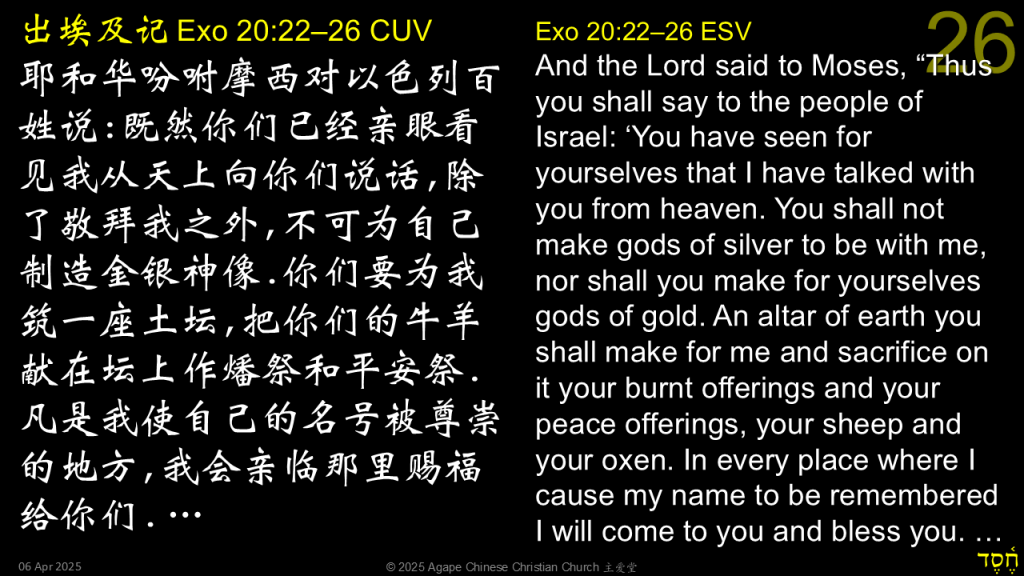
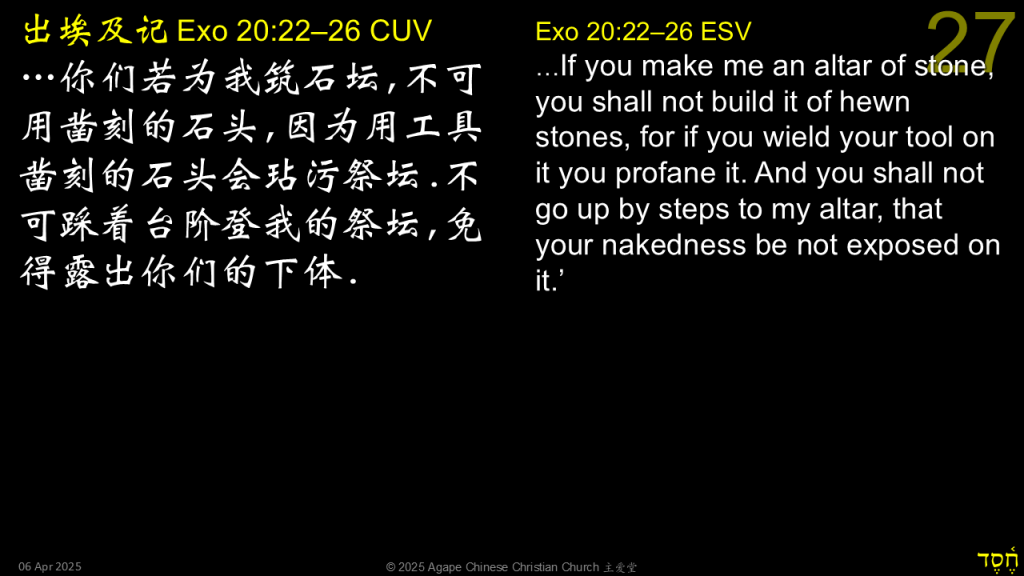
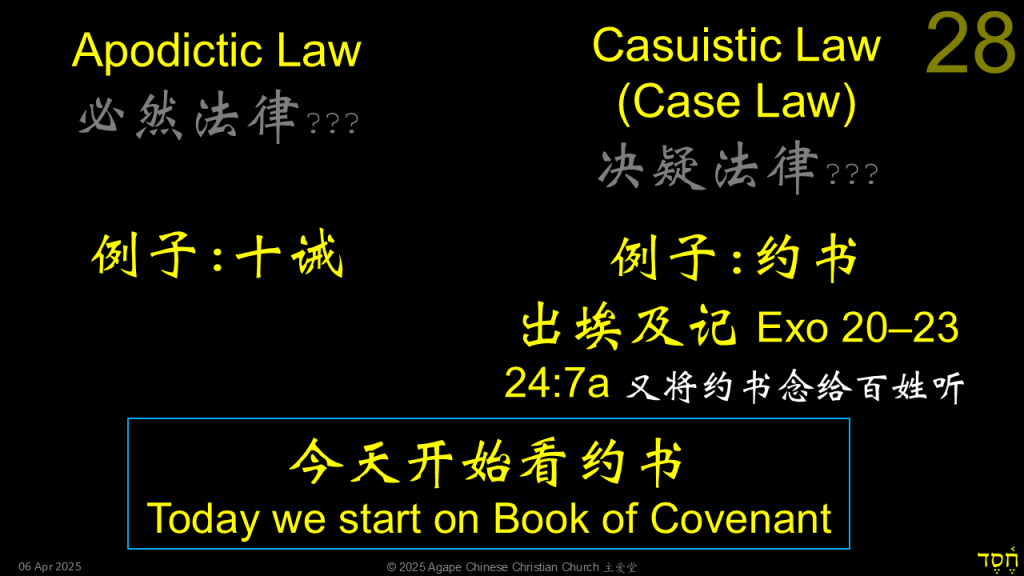
Copilot answers:
The term “apodictic law” refers to laws or commands that are absolute, certain, and self-evidently true, leaving no room for doubt or debate. These laws are often stated in a direct and unconditional manner, such as “You shall not steal” or “You shall not kill.” They contrast with casuistic laws, which are more conditional and situational, typically written as “If…then” statements.
Apodictic laws are commonly associated with moral or divine commandments, such as those found in religious texts like the Ten Commandments in the Bible. They’re meant to establish clear, universal principles that apply in all circumstances.
Casuistic law refers to laws or rules that are case-based, conditional, and often structured in an “if…then” format. These laws address specific situations and outline consequences or actions based on those conditions. For example, a casuistic law might state: “If someone steals an ox or a sheep and kills it or sells it, they shall repay five oxen for an ox and four sheep for a sheep.” This kind of law provides detailed instructions for particular scenarios.
Casuistic laws were commonly found in ancient legal codes, such as the Code of Hammurabi and parts of the Hebrew Bible (e.g., the Book of Exodus). They contrast with apodictic laws, which are absolute and universal (e.g., “You shall not steal”).
- 出埃及记 Exo 24:7a 又将约书念给百姓听 Then he took the Book of the Covenant and read it in the hearing of the people.
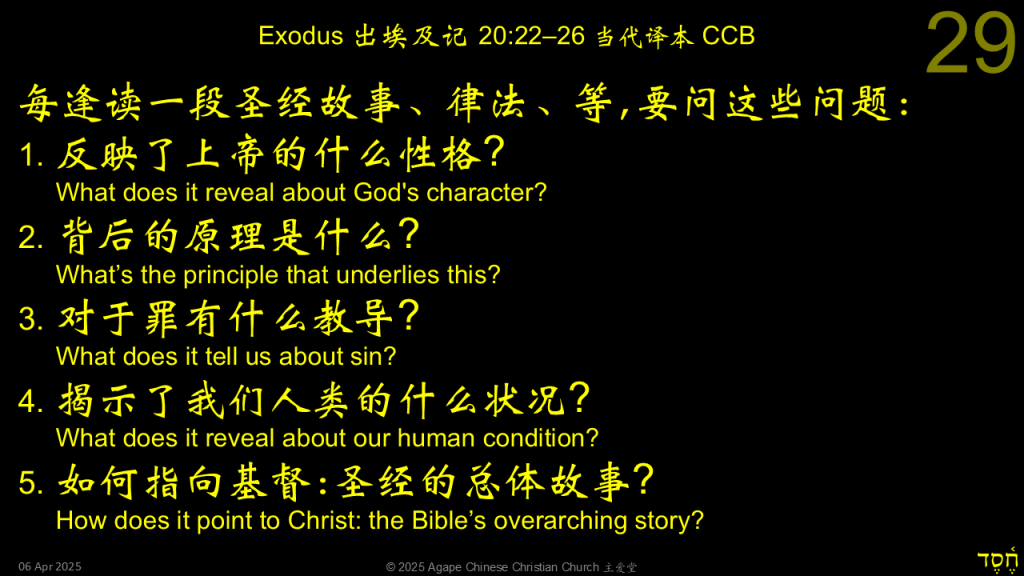
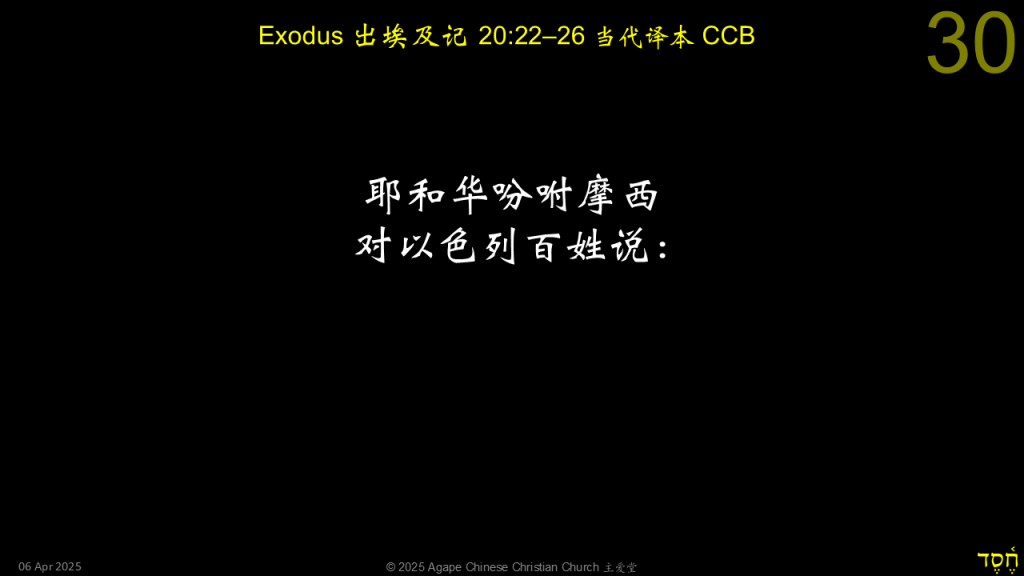
- Just done with the Decalogue
- Now begins a bunch of case laws (casuistic laws), ending in Exo 23:33
- This is the Book of Covenant
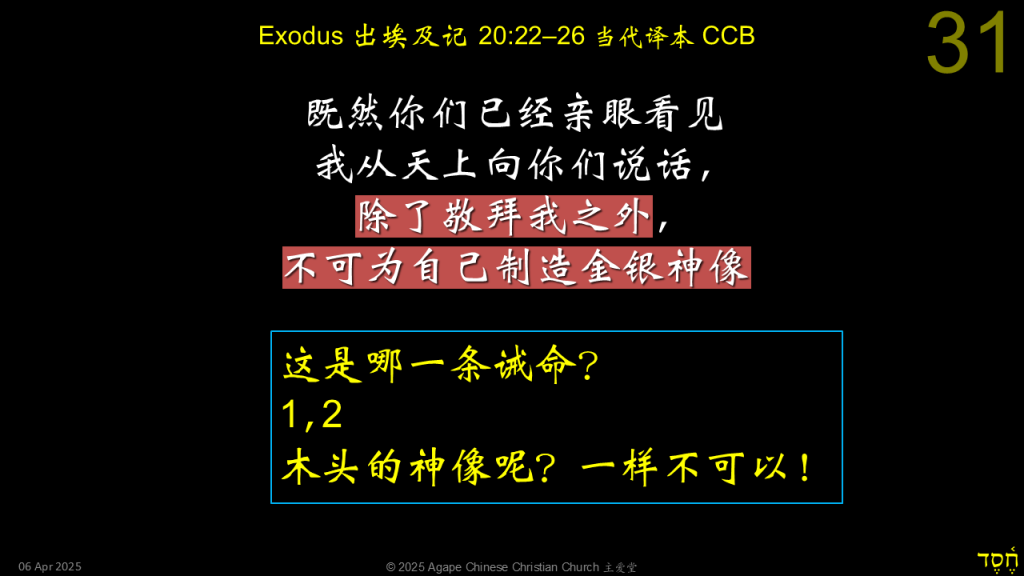
- 制造 Zhìzào
- “敬拜我” not in the Hebrew; CCB added this; most other Chinese translations and most English versions keep to the original Hebrew
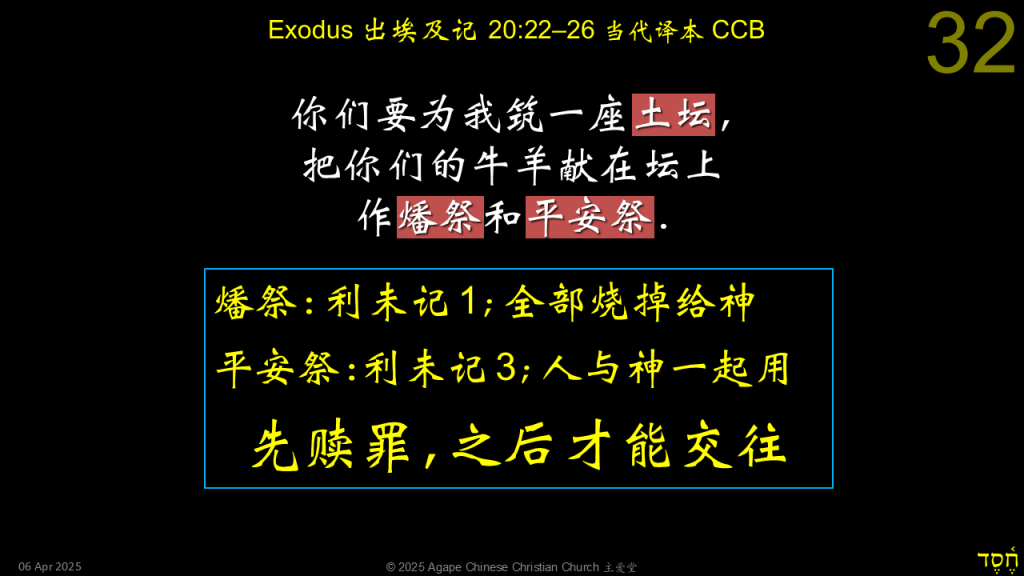
- 土坛 Altar of earth: Can be set up anywhere, so it’s temporary
- Burnt offering: Entirely burned up to YHWH, the person doesn’t eat any of it
- Peace (or Fellowship) offering: Partly burned up for YHWH, partly eaten by the person
- Burnt offering is for cleansing of sins, Peace offering is for fellowship (communion) with God
- Justification comes first, before fellowship
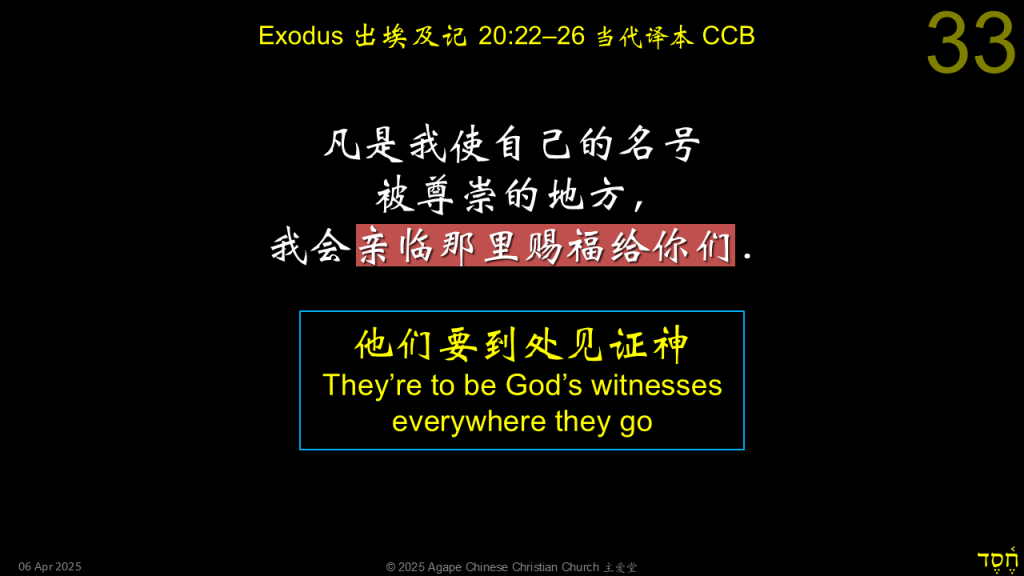
asdf
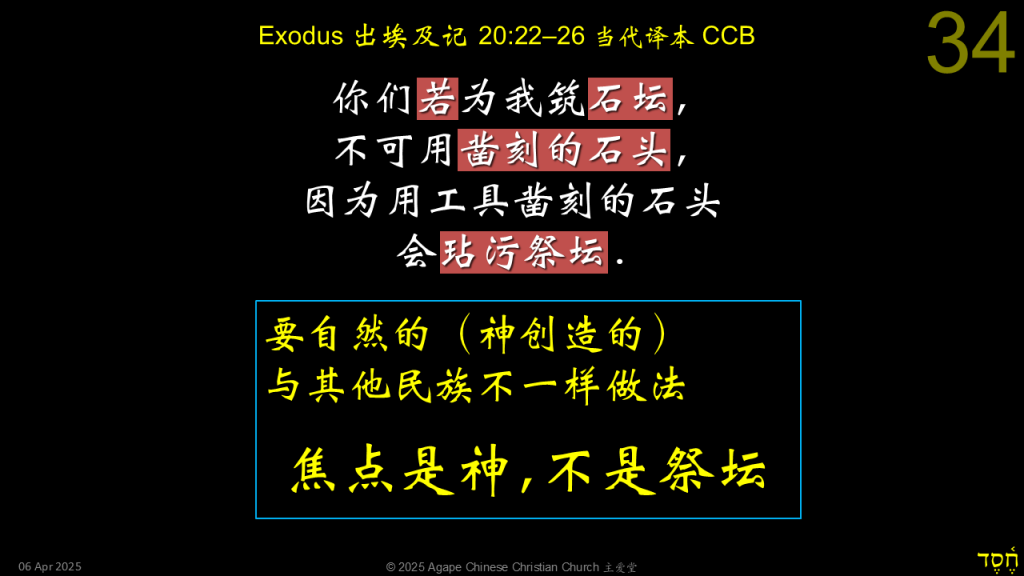
- 石坛 Altar of stone: more permanent, especially later like temple in Jerusalem
- 凿刻 Záo kè Hewn, chieselled
- 玷污 Diànwū Defilement. When we used hewn stone, it’s not natural; we’re adding things
- Don’t add our handiwork when worshiping God (John 4:23 要用心灵和诚实拜他 Worship him in spirit and truth)
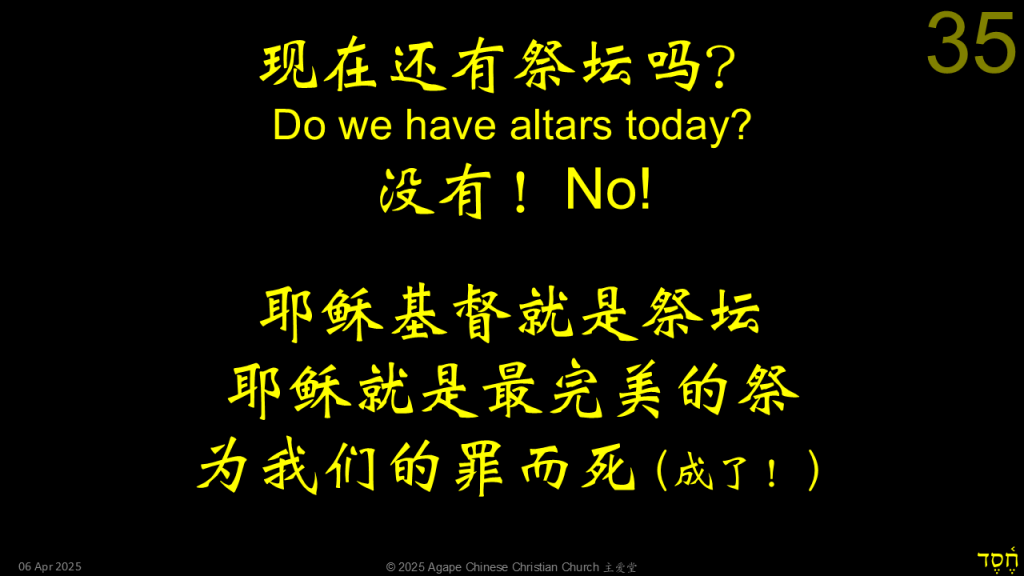
- No, we don’t have altars today
- Sacrificial system is over, because everything is fulfilled in Jesus Christ
- Jesus is the altar on which we’re justified, (Heb 13:10a 我们有一祭坛 We have an altar). This altar is Jesus Christ
- Jesus is the final, perfect sacrifice, he entered the dark place (like Moses in Exo 20:21), to die in our place
- He’s the only one who can say “It’s finished!” None of the thousands of priests in the OT can ever say that!
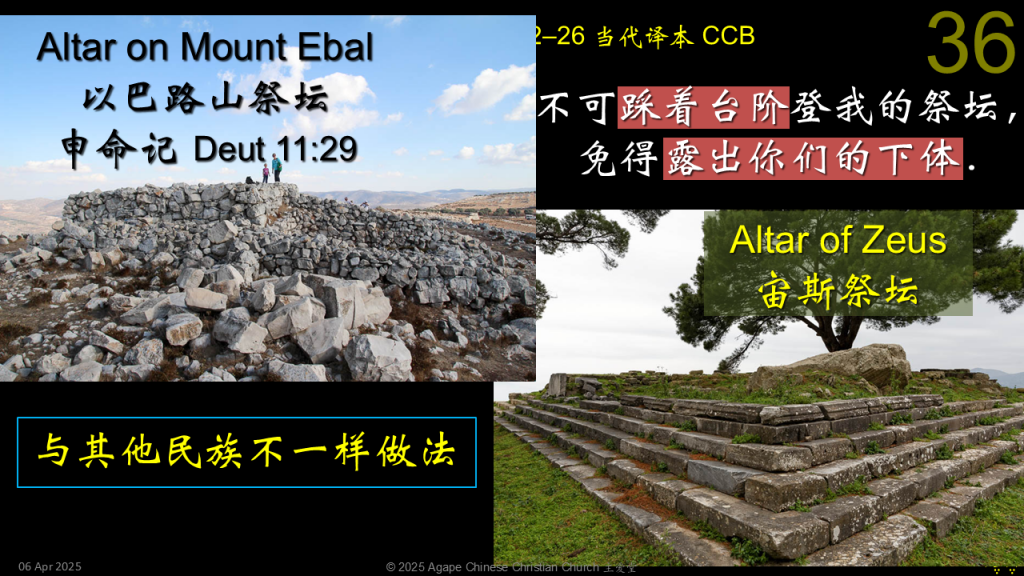
- 踩着台阶 Cǎizhe táijiē Make steps going up
asdf
asdf
asdf
asdf
asdf
asdf
asdf
asdf
asdf
asdf
asdf
asdf
asdf
asdf
asdf
与我有什么关系? So What?
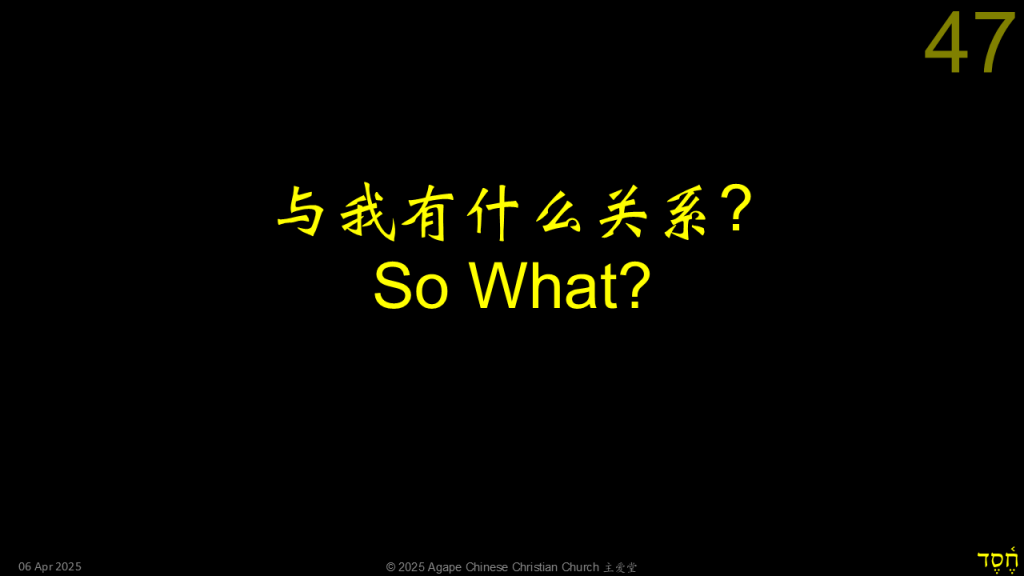
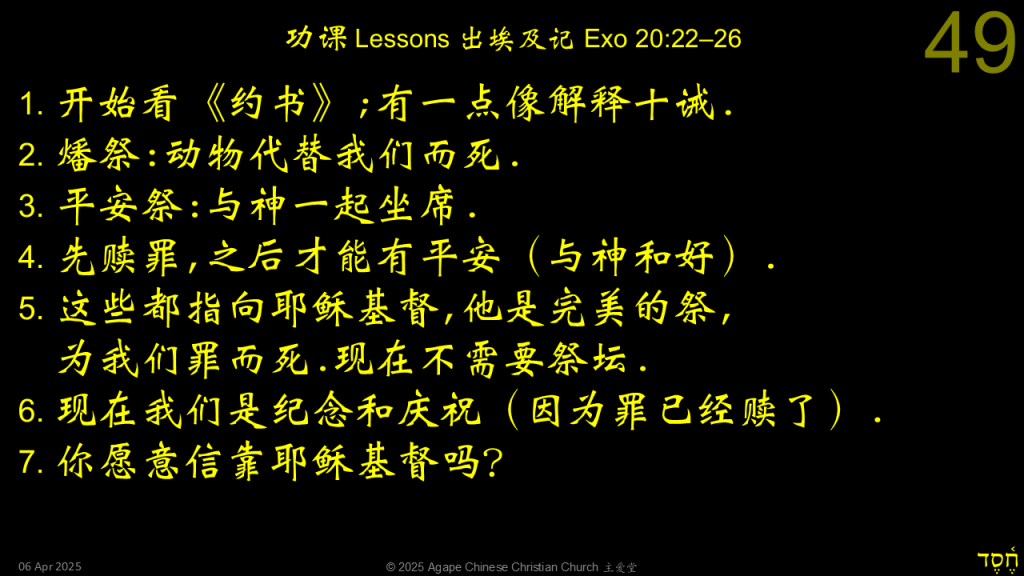
- We’re starting to read the Book of Covenant. Sort of like an explanation of the Decalogue.
- Burnt offering: The animal died in our place.
- Peace (or Fellowship) offering: We can feast together with YHWH.
- Justification must come first, only then can we have peace (in right relation with YHWH).
- All these things point to Jesus Christ, who is the perfect sacrifice,
who died for our sins. Today, we no longer have need for an altar. - Now we remember and also celebrate (because we have been justified, our sins forgiven).
- Do you want to put your faith in Jesus Christ?

